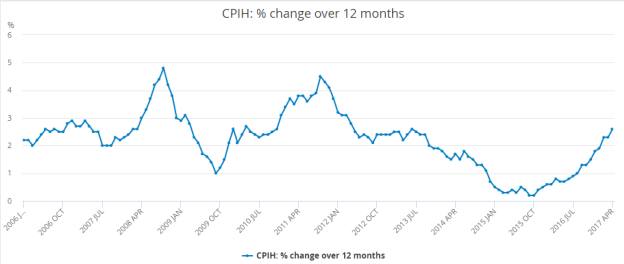
What sort of inflation-busting strategies should advisers consider when putting together an income portfolio?
With inflation edging up to 2.7 per cent currently and inferences from the Bank of England that CPI will hit 3 per cent by the end of the year, inflation is becoming a consideration for investors.
It is worth stating at the outset that inflation is nowhere near its heady heights of the 1970s, and generally since 1960 it has hovered around 5 per cent. Moreover, since the Bank of England achieved its independence, it has maintained an average yearly inflation rate of 2.02 per cent – pretty much on its 2 per cent target.
Inflation can have a positive effect on savers, as investors putting money aside in the 1970s and 1980s can testify.
Chris Leyland, deputy chief investment officer for True Potential, explains: “A lot depends on the future level of inflation.
“A rate hovering between 2 per cent and 4 per cent, as a rough rule of thumb, represents a sweet spot.
"Equity investors invested in businesses earning double-digit returns on invested capital should benefit and the ongoing economic healing we are witnessing allows fixed income investors to benefit from narrowing credit spreads."
That said, any rise in inflation in this low-interest world is a consideration for investors in terms of spending power in the investor’s pocket. Mr Leyland adds: “Beyond a certain level, inflation is bad for all investors and it is why central banks seek to manage it.”
Therefore, advisers should be looking for ways to mitigate the eroding effect of inflation on the value of portfolios.
Jonathan Baltora, portfolio manager for AXA Investment Managers, says: “Inflation is a concern across bond investors.
“After years of falling inflation, the normalisation we are currently witnessing is a concern.”
ONS: January 2006 to April 2017 - peaks and troughs in CPI
He gives two reasons for this concern: central banks starting to normalise monetary policies, and the concept of financial repression.
Mr Baltora explains the effect of large-scale asset purchases on long-term interest rates have had the effect of pushing bond yields lower. “On average, 25 per cent of an economy’s GDP in asset purchase equates to 1 per cent lower bond yields, which gives an idea of how big a post-quantitative easing bond yield normalisation could be. No doubt this would be negative for longer-term bond holdings.”
Moreover, he says should the Federal Reserve decide to gradually unwind its balance sheet by not reinvesting the proceeds from maturing bonds, there is a risk that longer maturities would under-perform and the yield curve would steepen.
“In this regard, shorter maturities on the curve look more attractive to us as interest rate hikes will be far more gradual and less numerous than in earlier economic cycles, due to higher indebtedness and lower structural growth,” he says.









